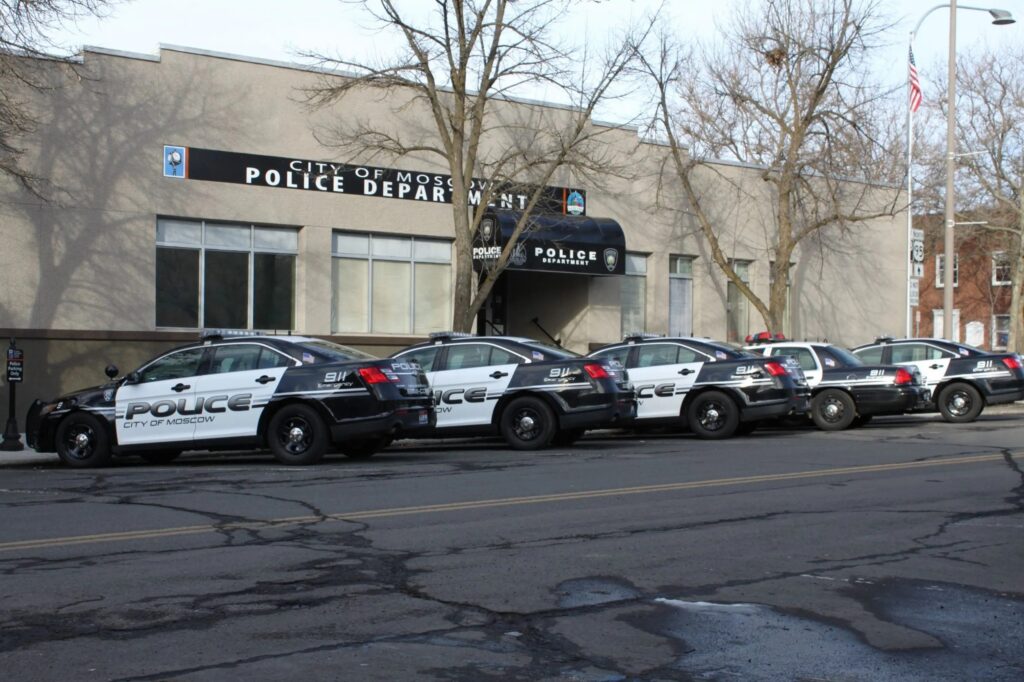A new Moscow police station has been completed, complete with licensing rooms, multiple interview rooms, and a huge training room for officers and the Moscow Citizen’s Academy. Other new features include a larger locker room and extra lockers for future staffing hires. The police department has also purchased new exercise equipment, as police officers need to stay in good physical shape in order to do their job. The new facility also features a gym for officers, as Moscow is known for its high-crime rate.
Operates as an entity of the American Criminal Justice Department
The American criminal justice system has three major components: law enforcement, courts, and corrections. These three agencies work together to combat crime on the local, state, and federal levels. Their overall goals are to prevent crime, enact justice, and retribute those who commit crimes. A flowchart illustrating the various components of the criminal justice system shows how each of these departments operates. Read on to learn more about the various departments and the ways they work together.
Operates a police academy
An officer who is interested in joining the San Diego Police Department can consider becoming a police academy recruit. This program is designed to provide students with the best training possible for the job. Recruits will learn effective policing strategies and tactics. They will also learn what to expect while on the job. After graduation, they will likely work alongside former instructors. To be a successful police officer, new graduates must be well-versed in their field before they begin training.
The training of police recruits at a traditional paramilitary academy fails to adequately prepare them for community oriented police services. The typical academy training format ignores basic principles of adult learning theory. Police academies need to prepare recruits to solve problems independently. This requires a rigorous curriculum. But how can an academy improve the training of recruits? Listed below are some ways to make police academies more successful.
The training of a police recruit begins with classroom lectures and practical activities. They learn state laws, patrol procedures, firearms training, traffic control, self-defense, first-aid, and criminal investigation. The academy includes practical training, which includes simulations of crime scenes and scenarios-based performance appraisals. They must spend over 664 hours in classroom instruction. They must also pass formal exams and perform fieldwork. Applicants who are interested in becoming police officers should seek information on local police academies in their area and begin their research.
Patrols parks
The Moscow Police Department patrols public parks throughout the city to prevent crime and maintain order. The department was established in 1722 and is officially the Main Directorate of Internal Affairs of the City of Moscow. During the Soviet era, it was known as the Moscow Municipal Militia. President Dmitry Medvedev reorganized the Russian police force in 2011 and gave it its present name. Today, the police force is composed of thousands of men and horses.
On Monday, the Moscow Police Department’s daily activity log recorded four incidents. One involved a physical domestic incident. Another involved a person running into a fence. Both incidents were reported to police. The police also received reports of a toilet paper fire and a complaint that the police were investigating a license plate theft complaint. One officer contacted a caller on a motorcycle and took a report. Another officer said he had a dog that was not leashed in a vehicle. A mental health professional was called to discuss the case.
Prevents crime
The Moscow Police Department focuses on providing efficient, effective public safety services, including crime prevention. The department is led by Chief of Police James Fry. The Moscow Police Department is located at 206 E. Third Street and 118 E. 4th Street, and is located in Moscow, Idaho. The department also provides cultural activities and supports the University of Idaho in Moscow. The following is a brief history of the department.
Russia’s police are often viewed as ineffective, corrupt, and violent. During the communist era, Russians made fun of the police by raiding markets and seizing easter eggs. Police corruption is prevalent, and bribery is routine. Hundreds of high profile murders in the 1990s went unsolved, and the police are increasingly being relegated to the role of the “security forces.”
The Ministry of Interior is responsible for organizing the police forces of the Russian Federation. Its role is to enforce the law and prevent crime, as well as carry out forensic activities. The Interior Ministry is headed by a Minister of the Interior, supported by a First Deputy Minister, three deputy ministers, and a state secretary/deputy minister. Each department has a unique mission and is supported by a variety of divisions.
Provides ice cream for crowds
A Moscow ice cream vendor stands near a line of police blocking protesters during the recent Moscow City Council elections. Police in Moscow have a strong community-oriented policing philosophy, which has led to the department providing ice cream to crowds. A middle-aged woman bursts into uncontrollable laughter after receiving a golden-foiled Wall’s Cornetto cone.
Has training room
A new training center is being built at the Moscow Police Department that will allow officers to utilize modern fitness equipment that is state-of-the-art. In addition to a training room, the new police department will feature a licensing room, multiple interview rooms, a Citizen’s Academy, and locker rooms with extra lockers for future staffing hires. Here’s a look at what the new training center has to offer.
The OMON system is the successor to the Soviet Special Police Unit. It was formed in Moscow on 3 October 1988. This special police unit was initially known as the “Militsiya Squad of Special Assignment”. It was manned by former Soviet Army and Soviet-Afghan War veterans. The unit’s primary function was to respond to emergencies involving violent crime and riots, but eventually became involved in paramilitary-style operations and a wider range of police duties.


